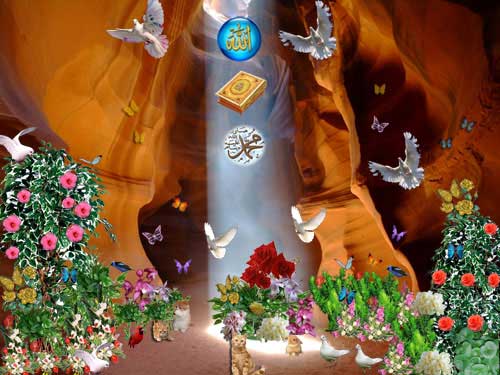 1. How Are Inhalation and Exhalation Regulated?
1. How Are Inhalation and Exhalation Regulated?Were the regulation of respiration left up to us, we might die when we forgot to breathe, fell asleep or became occupied with some other matter. Yet the process of respiration, of such vital importance, is in fact regulated by the respiratory centre consisting of three groups of nerve cells.
The first group of cells determines the basic rhythm of respiration and issues the command for us to inhale.
The second group of cells determines the speed and course of respiration. When the second group of cells goes into action, however, they issue a signal that halts the activity of the first group. The air filling region of the lung is thus controlled and our breathing is speeded up.
The third group of cells is not active under normal respiratory conditions. It only enters the equation when we need to breathe at a high rate, sending a signal to the stomach muscles, causing them to contract.
2. The Unfamiliar Benefits of Honey
• It is easily digested.
• It helps improve the functioning of the intestines and kidneys.
• It enters the bloodstream quickly and is a fast source of energy.
• It helps with blood production.
• It has antimicrobic and antioxidant properties.
• It contains many vitamins and minerals.
• Used in the treatment of injuries, the way that honey can immediately draw moisture from the air prevents scarring by accelerating healing. It stimulates the tissues involved in the healing process to re-grow. Honey also has an anti-inflammatory effect that reducing swelling around the wound.
• It helps improve the functioning of the intestines and kidneys.
• It enters the bloodstream quickly and is a fast source of energy.
• It helps with blood production.
• It has antimicrobic and antioxidant properties.
• It contains many vitamins and minerals.
• Used in the treatment of injuries, the way that honey can immediately draw moisture from the air prevents scarring by accelerating healing. It stimulates the tissues involved in the healing process to re-grow. Honey also has an anti-inflammatory effect that reducing swelling around the wound.
3. What Would Happen If the Earth’s Crust Were Slightly Different?
Any variation in its thickness would have many negative effects. Two of these are:
Were the Earth’s crust any thicker, then more oxygen would be transferred from the atmosphere to the crust and this would make life on Earth impossible.
Were the Earth’s crust any thinner, there would be so much volcanic activity that life would again be impossible.
4. How Do Mountains Prevent the Earth’s Plates from Moving?
One tends to think of mountains as impressive structures rising up out of the ground. Yet in addition to their surface heights, mountains also have parts known as the mountain root, and these extend up to 10-15 times their own height under the ground. Thanks to these features, mountains extend above and below ground at the points where the earth’s plates join, thus pinning them together. By fixing the Earth’s crust they thus prevent the magma layer sliding over or between their own plates. This to a large extent prevents earth tremors. In short, mountains are like nails holding pieces of wood together.
5. Before Birth
The X and Y chromosomes are specialized in such a way as to determine gender, with two X pairs in women and X and Y in men. The data contained in just one of the X chromosomes is sufficient for life to continue. Before birth, one of the two active X chromosomes is selected in a female developing baby. However, there is one important detail here. The decision as to which chromosome’s genes will become active is taken on the basis of their capacities. No scientific answer regarding the basis on which this selection is made has yet been obtained. The perfection in this structure is just one of the proofs of our Almighty Lord’s creation.
6. The Importance of the Location of the Eye
Vision takes place in the most comfortable and ideal manner with the location of the eyes in the head region. Were our eyes on our legs, for instance, we would only be able to see the area we were walking in, and the upper part of our bodies, especially the head, would keep knocking into things.
Moreover, the fact that our eyes are in our heads keeps them healthy and protected. Because a small and fast reflex movement of the neck prevents them coming into contact with an object that might damage them.
7. Why Do Eggs Have Pores?
Egg shells contain tiny pores. Thanks to these minute holes, too small to be seen with the naked eye, the embryo inside survives by absorbing oxygen from the outside. Another important function of these pores is to release the water vapor that forms inside the egg.
If the pores were smaller than required, the young would die from lack of oxygen.
Were they any larger, the water in the egg nutrients would vaporize and the egg would dry up, again resulting in the death of the embryo. Yet
thanks to our Lord’s compassion and sublime creation, this equilibrium has been established in the most delicate way.
8. What makes Our Teeth So Strong?
The enamel that gives our teeth their strength is as hard as crystal. Tooth enamel, with a structure resembling ceramic, is attached to the softer dentine in a flexible manner. Some researchers compare dentine and enamel to a glass plate on a bed. Since these two substances are constructed with just the right level of hardness, the flexible bond between the dentine and enamel prevents the enamel from breaking even over a lifetime of chewing and grinding. This is one of the proofs of our Lord’s affection for us.


